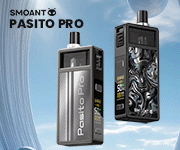itssme
Achiever
- Joined
- Aug 4, 2013
- Messages
- 1,430
The Evolvs are the only really good boards available IMO, DNA25 or 40 for very small mods or DNA200 is still very compact, I just built one and it only takes 18 x 10.3 x 71 mm room inside a box with 1.6 mm walls like a Hammond, a bit less with thicker walls, the 950 mAh LiPo is only is 72x25x20. The YiHi SX350Js are bigger, more expensive, only a ODA warranty, have really strange pulse frequency modulated output and don't seem to monitor the temp in real time, by reports they just measure R twice a second between pulses, I had one and it was about 150 F out with the temp sensing.
No board ATM monitors coil temp... they work from algorithms loaded for specific coil materials. Providing the resistance between the mod side of the +pin and the + side on the atty side is not mad..temp control should not be effected...be it a "Fat Daddy, Thin Daddy....Daddy with Cholera or any other 510!













